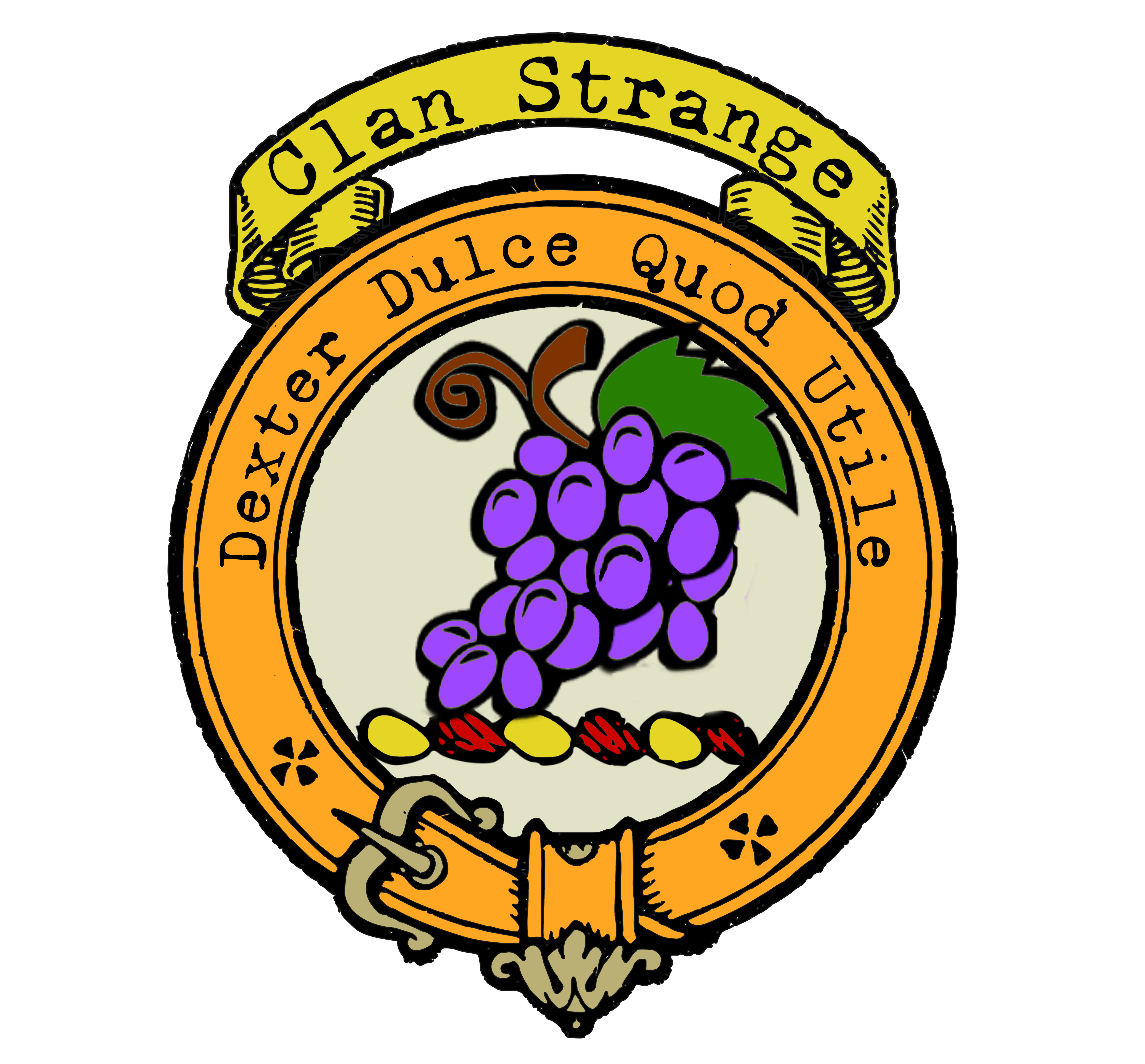Clan Strange
|
|
CREST: A cluster of grapes Proper MOTTO: Dulce quod utile (That which is useful is sweet) TRANSLATION: That which is useful is sweet VARIATIONS: N/A |
| The origins of Clan Strange are rooted in medieval Scotland, and the name “Strange” itself offers intriguing insights into its history. As mentioned earlier, the name likely has Norman or French origins, with “étrange” meaning ‘foreign.’ Over time, it evolved to “Strang” and even found connections to the Scots dialect word for ‘strong.’ This dual etymology hints at the clan’s multifaceted character.
The earliest records of Clan Strange trace back to the 13th and 14th centuries. Home le Estraunge served the Scottish king around 1255, showcasing the clan’s early influence. Thomas de Strang held land around Aberdeen in 1340, underscoring their presence in the region. One of the most prominent figures associated with Clan Strange was Sir Robert Strange. He was descended from a younger son of the House of Balcaskie, a branch of the clan. While originally intended for a career in law, Sir Robert found his true calling in the art of engraving. His journey took him from the turbulent times of the Jacobite Rebellion, where he served in the Prince’s Life Guard, to London, where he became renowned for engraving historical prints. Today, he is celebrated as the father of historical print engraving, leaving an indelible mark on the world of art. Clan Strange did not exist in isolation but played roles in significant historical events. John Strang of Balcaskie, for instance, met his fate at the Battle of Pinkie in 1547, a pivotal conflict during the Rough Wooing period. The clan’s involvement in such events underscores their active participation in Scotland’s history. Though Clan Strange may not have the same prominence today as in centuries past, its legacy endures through the stories of its members and their contributions. Their role in art, as exemplified by Sir Robert Strange, continues to inspire creative minds. The clan’s name and history also serve as a reminder of Scotland’s diverse cultural tapestry. In modern times, people with the surname “Strange” may not always be aware of their clan heritage, but the clan’s history adds depth and character to their family stories. Clan societies and genealogical research allow descendants to connect with their roots and explore their unique Scottish heritage. |
|
Citations:
|
|
Purchase @ Redbubble
Purchase @ Amazon.com
Purchase @ Amazon.co.uk

